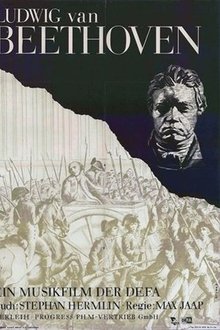The 9th Symphony of Ludwig van Beethoven is one of the most popular pieces of classical music in the world. Even those who are not passionate about the classical music recognize the famous Ode to Joy. Despite the grim context in which it was created, the 9th Symphony leaves us fascinated, moved and uplifted by its creativity, its power and its culmination in the Ode to Joy. More than 160 years after it was written, Beethoven’s hymn to brotherhood was adopted by the European Union as its official anthem. But Beethoven’s Ninth is also met with enthusiasm far beyond the borders of Europe. What’s the explanation for its never ending success? What is it about this work of art that fascinates people all over the world?
Related Movies

What Difference Does It Make? (2014)
A documentary that explores the challenges that a life in music can bring.

Bach: A Passionate Life (2013)
John Eliot Gardiner goes in search of Bach the man and the musician. The famous portrait of Bach portrays a grumpy 62-year-old man in a wig and formal coat, yet his greatest works were composed 20 years earlier in an almost unrivalled blaze of creativity. We reveal a complex and passionate artist; a warm and convivial family man at the same time a rebellious spirit struggling with the hierarchies of state and church who wrote timeless music that is today known world-wide. Gardiner undertakes a 'Bach Tour' of Germany, and sifts the relatively few clues we have - some newly-found. Most of all, he uses the music to reveal the real Bach.

Toscanini in His Own Words (2009)
This film is a docufiction on the great Toscanini directed by well-known filmmaker Larry Weinstein; who pushes the boundaries of conventional documentary storytelling by borrowing tools from fiction films; including dramatic reconstructions and historical cinematic stylings.
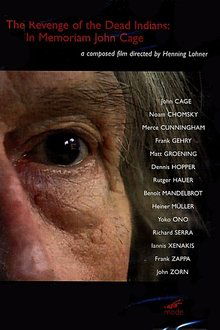
The Revenge of the Dead Indians (1993)
This is a full-length documentary honoring the life and work of American composer and artist John Cage. Cage is considered one of the most influential composers of the 20th century. This documentary features interviews with various personalities from different fields as they introduce us to the life and work of this great American artist.
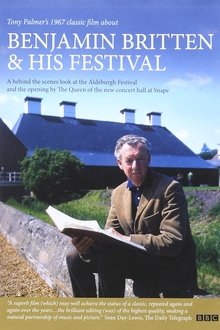
Benjamin Britten and His Festival (1967)
A behind-the-scenes look at the Aldeburgh Festival and the opening by The Queen of the new concert hall at Snape.

Holst: In the Bleak Midwinter (2011)
The great composer of The Planets, Gustav Holst also taught himself Sanskrit, lived in a street of brothels in Algiers, cycled into the Sahara Desert, and allied himself during the First World War with a ‘red priest' who pinned on the door of his church "prayers at noon for the victims of Imperial Aggression". He hated the words used to his most famous tune "I Vow to Thee My Country" because it was the opposite of what he believed, and died before the age of 60 - broken and disillusioned.

4 (2007)
In four corners of the globe, in each of the four seasons, four outstanding violinists guide us on an extraordinary journey through their four distinct homelands. From the springtime blossoms of Japan, into the blistering heat and thunderstorms of an Australian summer; from a joyful autumn in New York, to the unforgiving cold and human warmth of a Finnish winter. The resonant and much-loved music of Antonio Vivaldi's The Four Seasons and the timeless stories they tell, form the backbone to this bold and engaging celebration of friendship, homeland and the cycles of life.

Young, Gifted and Classical: The Making of a Maestro (2016)
Sheku Kanneh-Mason made history in 2016 when he became the first black winner of the BBC Young Musician competition. Sheku has six musically gifted siblings and this film explores their extraordinary talents and issues of diversity in classical music. We follow Sheku and his brothers and sisters and examine the sacrifices that parents Stuart and Kadie make in order to support their children in pursuing their musical dreams. Told through the prism of family life we get an understanding of what it is that drives this family to be the best musicians they can be. At the heart of the story is 17-year-old Sheku, and we see him coming to terms with his Young Musician win and the pressures and opportunities it brings. His life is changing dramatically as he now has to learn to deal with the challenges of becoming a world-renowned cellist.
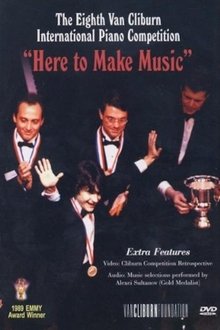
Eighth Van Cliburn International Piano Competition: Here to Make Music (1989)
Emmy Award winning documentary, directed by Peter Rosen, about the Eighth Van Cliburn International Piano Competition in 1989, featuring interviews with the contestants and jurists, and footage from rehearsals and performances, including by competition winner Alexei Sultanov.
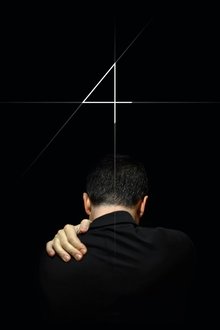
4 (2015)
A documentary on one of the world’s most exciting string quartets – the Quatuor Ébène – draws viewers into the musicians’ struggle with interpretational details, with colleague-friends – and with themselves.
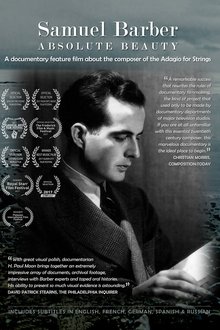
Samuel Barber: Absolute Beauty (2017)
Known for his mournful "Adagio for Strings," Samuel Barber was never quite fashionable. This acclaimed film is a probing exploration of his music and melancholia. Performance, oral history, musicology, and biography combine to explore the life and music of one of America’s greatest composers. Features Thomas Hampson, Leonard Slatkin, Marin Alsop and many more of the world's leading experts on Barber's music, with tributes from composers Leonard Bernstein, Aaron Copland, Virgil Thomson and William Schuman. The film was broadcast on PBS, and screened at nine film festivals internationally, with three best-of awards. It was named a Recording of the Year 2017 by MusicWeb International.
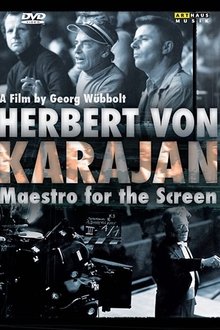
Herbert von Karajan: Maestro for the Screen (2008)
Documentary on conductor Herbert van Karajan, focusing on his early adoption of audio and video recording technology and his impetus to make use of it to preserve his musical legacy for future generations.
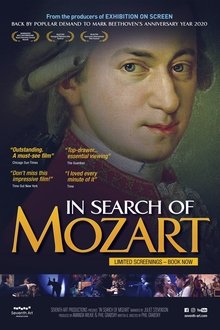
In Search of Mozart (2006)
Made to celebrate the 250th anniversary of Mozart's birth, IN SEARCH OF MOZART is the first feature-length documentary on Mozart's life. Produced with the world's leading orchestras and musicians, told through a 25,000 mile journey along every route Mozart followed, this detective story takes us to the heart of genius. Throughout, it is the music that takes center stage, with the jigsaw of Mozart's life fitting around it.

Song of Rapa Nui (2020)
This feature length documentary tells the story of Mahani Teave who grew up on Rapa Nui (Easter Island) and left at age 9 to pursue her dream of being classical pianist-a journey that takes her from mainland Chile to The Cleveland Music Institute to Berlin and the great concert halls of Europe. At the age of 30, on the brink of international success, Teave gives up her career to pursue a new dream, coming back full circle to Rapa Nui to found a free music school for the island's children. The resulting school-named Toki, after the basalt tool once used to shape Easter Island's iconic sculptures-is a model of sustainability, incorporating tons of tires, bottles and Pacific Ocean plastic; surrounded by agri-environmental gardens to grow food. With Toki, Mahani hopes to shape a bold new future for Rapa Nui and inspire hope and change on Earth, our island home.

Song for Hope (2022)
When diagnosed with terminal cancer, a world renowned trumpet player uses music to give hope from concert stages to mountain tops, proving art is essential to survival.
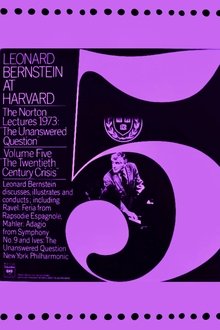
The Unanswered Question V : The Twentieth Century Crisis (1976)
This series comprised six lectures on music, which cumulatively took the title of a work by Charles Ives, The Unanswered Question. Bernstein drew analogies to other disciplines, such as poetry, aesthetics, and especially linguistics, hoping to make these lectures accessible to an audience with limited or no musical experience, while maintaining an intelligent level of discourse: Lecture 5 picks up at the early twentieth century with an oncoming crisis in Western Music. As these lectures have traced the gradual increase and oversaturation of ambiguity, Bernstein now designates a point in history that took ambiguity too far.
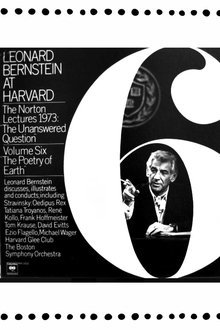
The Unanswered Question VI : The Poetry of Earth (1976)
This series comprised six lectures on music, which cumulatively took the title of a work by Charles Ives, The Unanswered Question. Bernstein drew analogies to other disciplines, such as poetry, aesthetics, and especially linguistics, hoping to make these lectures accessible to an audience with limited or no musical experience, while maintaining an intelligent level of discourse: This lecture takes its name from a line in John Keats' poem, "On the Grasshopper and Cricket". Bernstein does not discuss Keats' poem directly in this chapter, but he provides his own definition of the poetry of earth, which is tonality. Tonality is the poetry of earth because of the phonological universals discussed in lecture 1. This lecture discusses predominantly Stravinsky, whom Bernstein considers the poet of earth.
